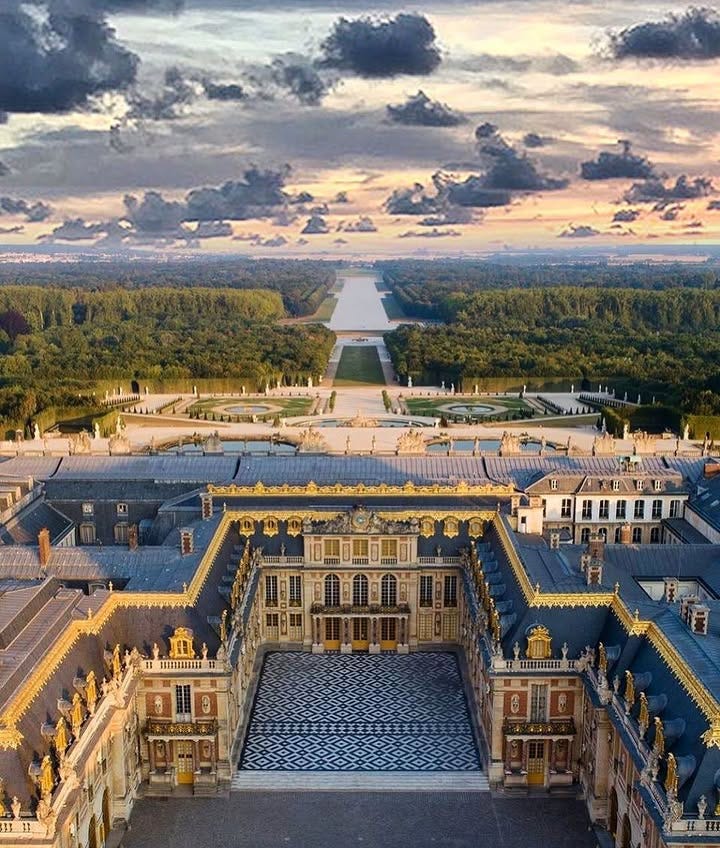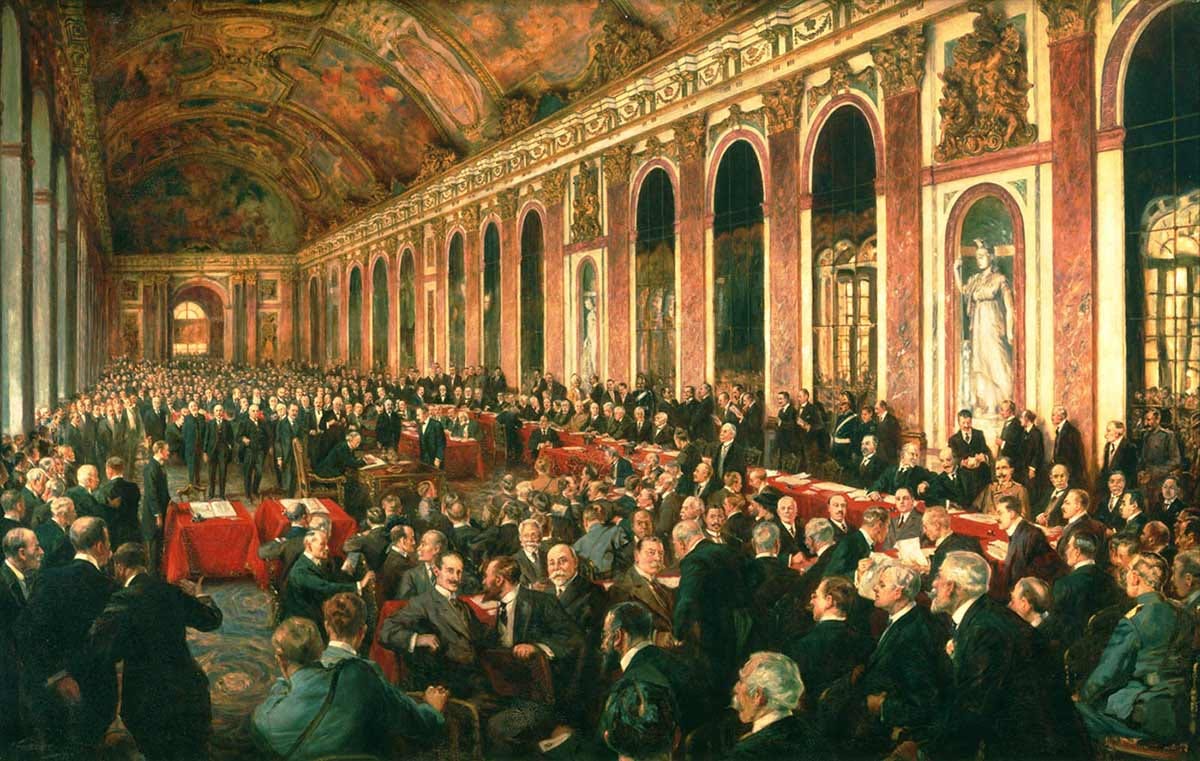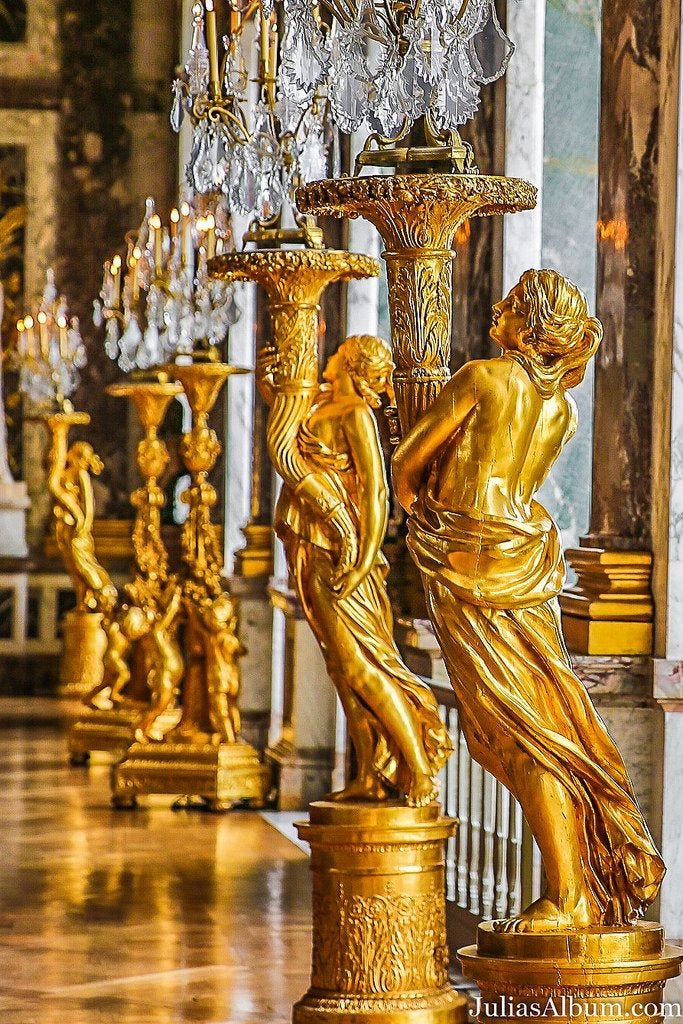A Palace of Power, Excess, and Illusions
Ambition sculpted stone, mirrors shaped history, and a king turned architecture into absolute rule...
Hello, Dear Reader
Welcome to this Thursday edition of Cultural Canvas, where we peel back the layers of history to reveal the drama, artistry, and sheer spectacle behind the world's most dazzling creations.
Today, we're stepping into the masterpiece of monarchy itself: Versailles.
A palace? Hardly.
It’s an ode to unchecked ambition, a statement of absolute power, and a mirror reflecting the very soul of Baroque excess.
A Manifesto in Marble
When Louis XIV envisioned Versailles, he wasn’t merely building a residence—he was crafting an ideology. To say Versailles is ornate is like calling the sun bright.

Its halls drip with gold, its gardens stretch as if infinity itself bowed before the king, and every inch of its design whispers, or rather, shouts:
I am France, I am power, and you will kneel before it.
But Versailles wasn’t conjured into existence overnight. It was an engineering marvel, a feat of logistics that required the relocation of villages, the sculpting of landscapes, and the construction of structures so grand that they redefined architectural ambition.
Never miss a post! Subscribe for free.
From Hunting Lodge to Architectural Marvel
Before Versailles was a palace, it was just a hunting lodge—an unassuming retreat of Louis XIII. But Louis XIV saw beyond the simplicity. He envisioned a stage upon which he would rule indisputably.
The transformation officially began in 1661, and over the next 21 years, Versailles expanded into the epicenter of monarchy and grandeur.
By 1682, Louis XIV had officially moved his court there, solidifying Versailles as the political and cultural heartbeat of France.
Versailles was not a simple build. It was an audacious orchestration.
Over 30,000 laborers worked to reshape marshland into a monument. The scope was staggering:
Marble from the Pyrénées, wood from Normandy, gold sourced across Europe—all transported in massive quantities.
Entire villages uprooted, landscapes reshaped to accommodate Versailles’ expanding vision.
Water, where it shouldn’t exist — Versailles had no nearby natural water source, so miles of pipelines were built to transport water.
Louis XIV may have been the visionary, but Versailles owed its grandeur to three architectural masterminds:
Louis Le Vau, who transformed the lodge into a palace fit for divine rule.
André Le Nôtre, whose gardens were not mere decoration but a statement of dominance over nature itself.
Charles Le Brun, who painted the heavens upon the ceilings, ensuring Versailles felt celestial.
The Hall of Mirrors
Perhaps the most famous chamber within Versailles is the Galerie des Glaces, the Hall of Mirrors — a corridor that is, quite literally, an exercise in illusion. The mirrors, positioned opposite soaring windows, create an endless cascade of reflections, making the space appear boundless.
But mirrors weren’t just for aesthetic pleasure, they were strategic!

At the time, Venetian artisans had mastered the craft of producing mirrors, and their techniques were closely guarded by the Republic of Venice. The French economy depended on importing Venetian mirrors, but Louis XIV wanted Versailles to be a symbol of France’s self-sufficiency.
Determined to break Venetian dominance, he poached expert mirror-makers from Venice — an act so controversial that Venetian authorities threatened the craftsmen with assassination if they shared their secrets.
Despite the risk, French artisans learned the craft, producing the 357 mirrors adorning the Hall.
Each mirror was not only a mark of luxury but an assertion of France’s rising supremacy in European craftsmanship.
Louis XIV, the ultimate showman, used them to orchestrate his own eternal presence. A courtier might steal a glance and see the Sun King not just once, but infinitely, his image multiplied in the glass.
These same mirrors later bore witness to world-altering moments — the signing of the Treaty of Versailles in 1919, sealing the fate of nations and marking the end of one war while setting the stage for another.
The palace never lost its role as a theater for history.
The Royal Chapel
Versailles wasn’t just a palace for the living, it was a gateway to the heavens.
Completed in 1710, the Royal Chapel stood as a symbol of divine monarchy, where kings weren’t just rulers — they were appointed by God himself. It wasn’t just any place of worship.

This was performance, spectacle, devotion wrapped in the grandeur of Baroque ambition. The vaulted ceilings stretched toward the heavens, framed by soaring colonnades and stained glass that bathed the court in celestial light.
Every morning, Louis XIV and his court gathered in silent reverence, watching from the tribune royale as priests conducted mass below.
Yet, like everything in Versailles, the Royal Chapel wasn’t just about faith — it was about control. Every ritual reinforced the monarchy’s God-given right to reign, binding politics and religion into one breathtaking illusion.
Gardens as Power Play
The gardens of Versailles are not merely ornamental, they are strategic. Louis XIV’s chief landscape architect, André Le Nôtre, designed them not for leisure but for control.
Nature itself was sculpted into submission — geometric, disciplined, relentless in symmetry. The vast canal, groves, and fountains were all proof that Louis ruled not just men, but the elements themselves.

And let’s talk about those fountains.
At a time when plumbing was barely a suggestion, Versailles had over 1,400 fountains, an extravagant use of water engineered purely to impress.
The king’s presence dictated their flow — when he strolled past, the fountains surged into action, turning simple hydraulics into a performance of power.
Cultural Canvas is a reader-supported publication. Every like, comment, share, or donation helps us grow—your support truly matters!
Versailles as a Stage—And Its Ultimate Fall
Like all great spectacles, Versailles was unsustainable. The sheer cost of maintaining its grandeur led to economic strain, deepening resentment among the people who saw their hard-earned coin poured into gilded ceilings instead of their own survival.
While the Sun King basked in opulence, revolution brewed in the shadows.
By the time Louis XVI and Marie Antoinette roamed its halls, the palace was no longer a symbol of absolute authority but of disconnect — of monarchy divorced from reality.
When the Revolution arrived, Versailles transformed from a fortress of splendor to a relic of excess. The people did not merely dismantle its monarchy, they dismantled its meaning.
Yet, Versailles never truly fell.
Today, it stands as a testament to the heights of human ambition, a monument to both creation and destruction, where beauty and power intertwine in a delicate, dangerous, and inebriating dance.
Versailles is philosophy in stone. It is the grandest dream ever etched into reality — the promise and peril of unchecked ambition, the embodiment of Baroque’s fevered heartbeat.
Walking through its gilded halls, you don’t just see history, you feel it!
Until Monday, dear reader — stay curious, stay questioning.
Yours in cultural wonder,
Muse
Missed our last piece? Read it here!





I don't usually like writing about Versailles, but I like this. It hits all the marks, but with a light touch.